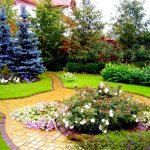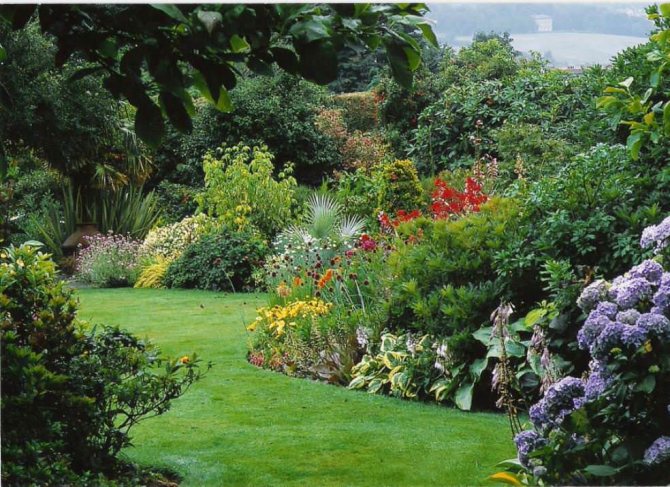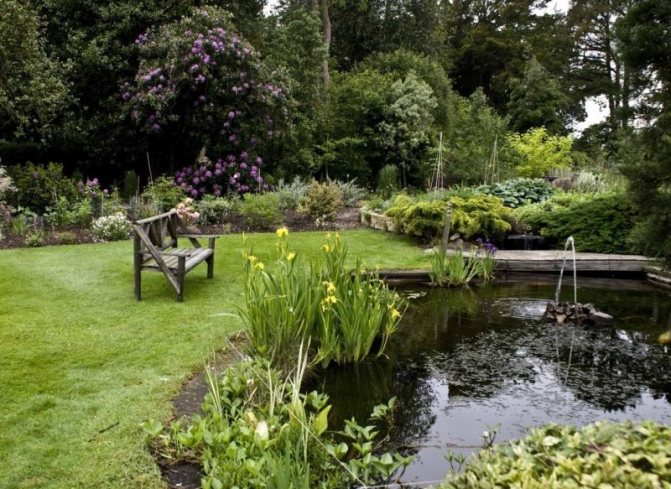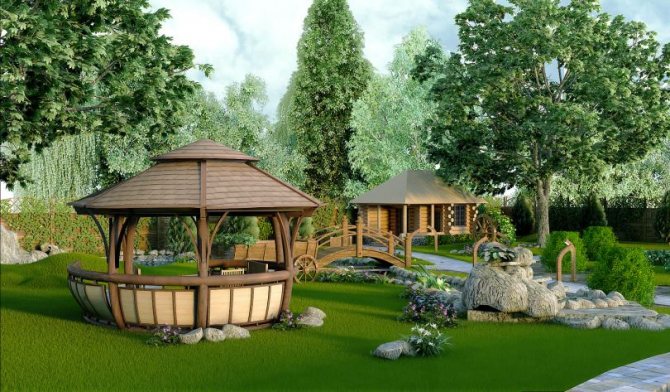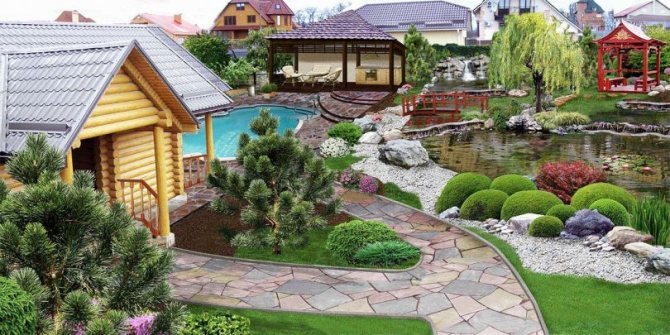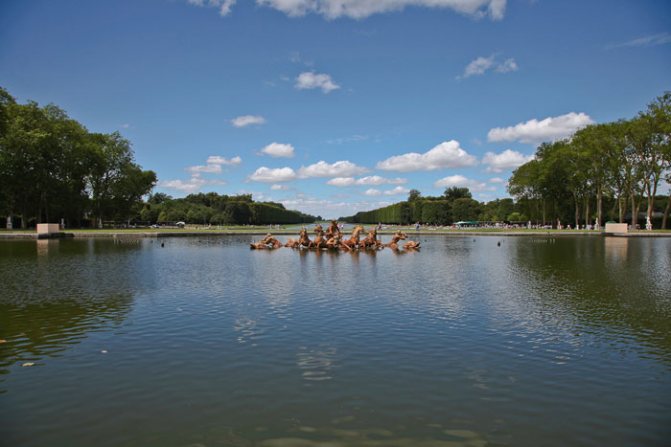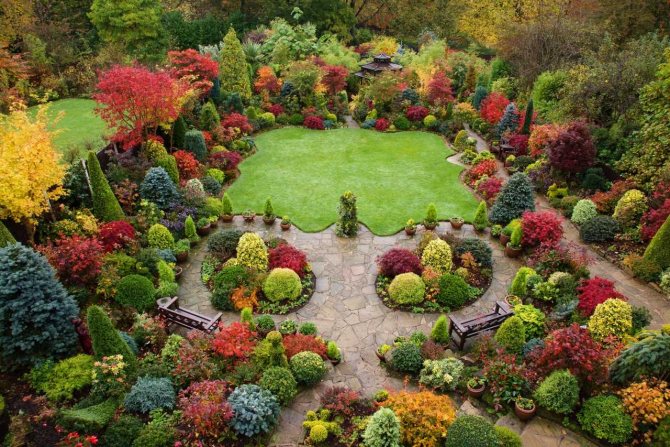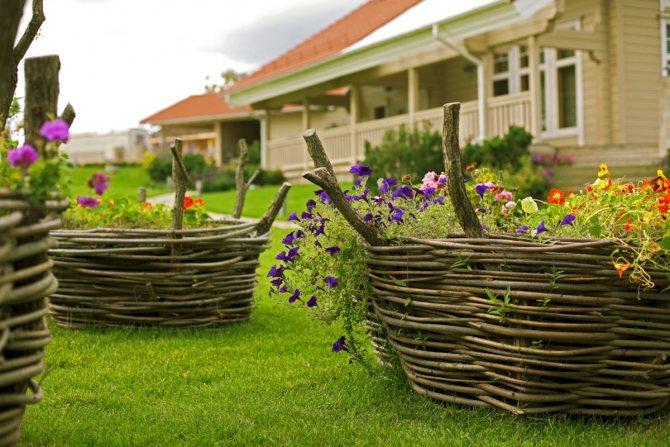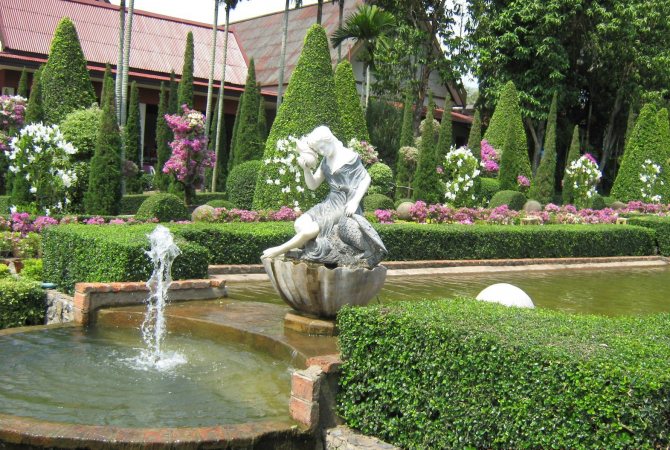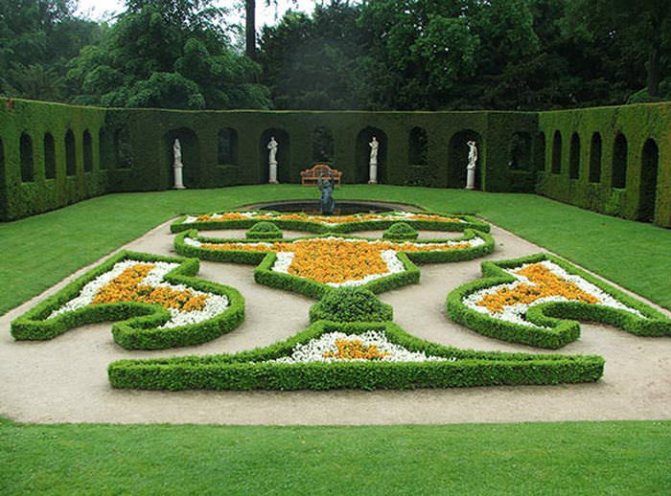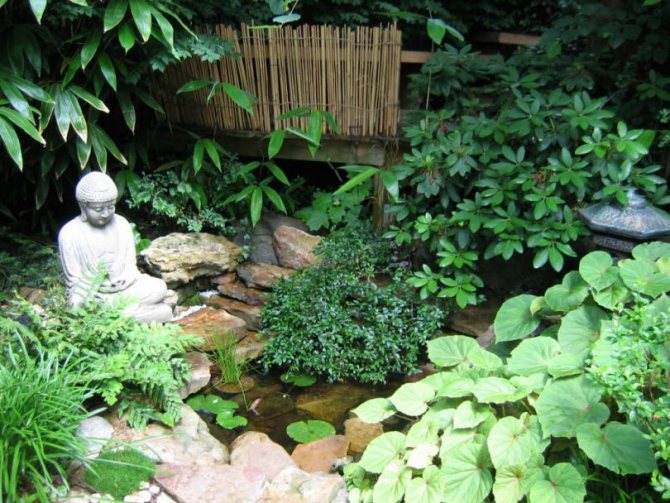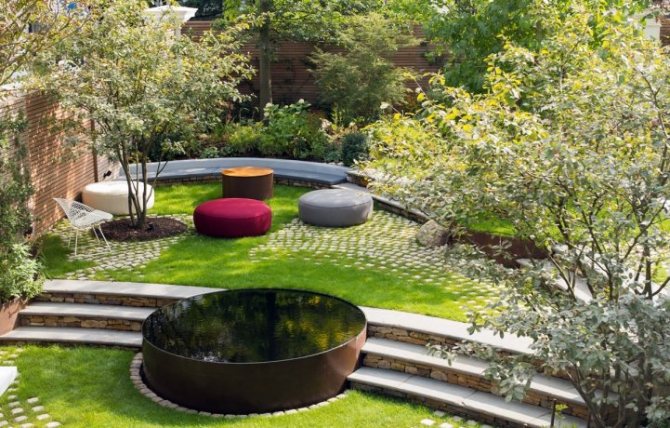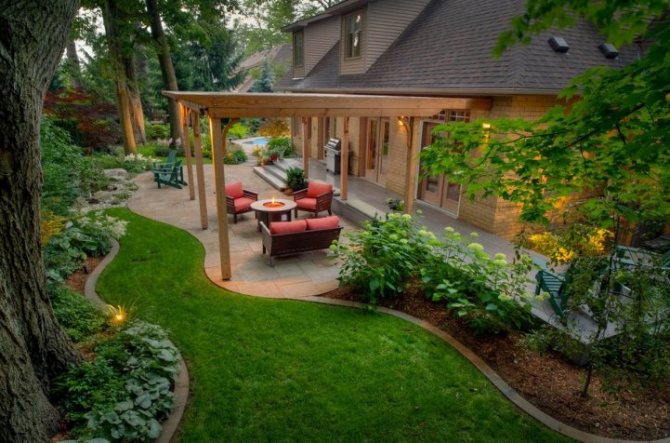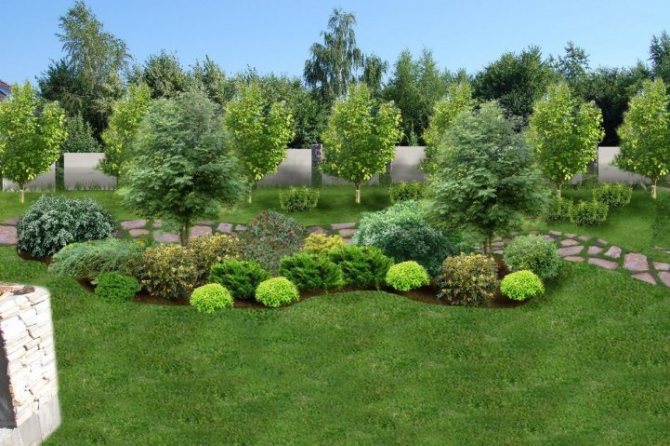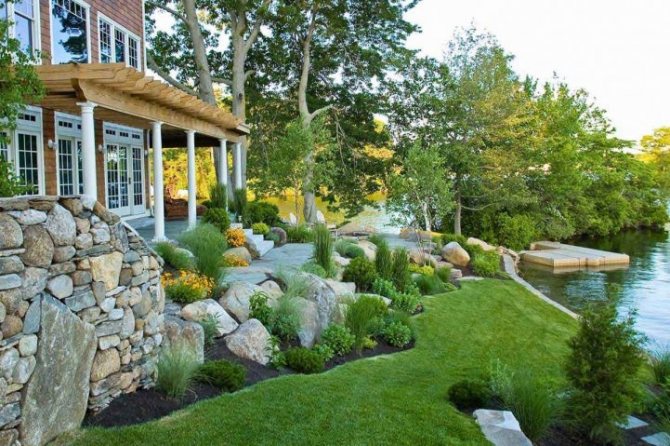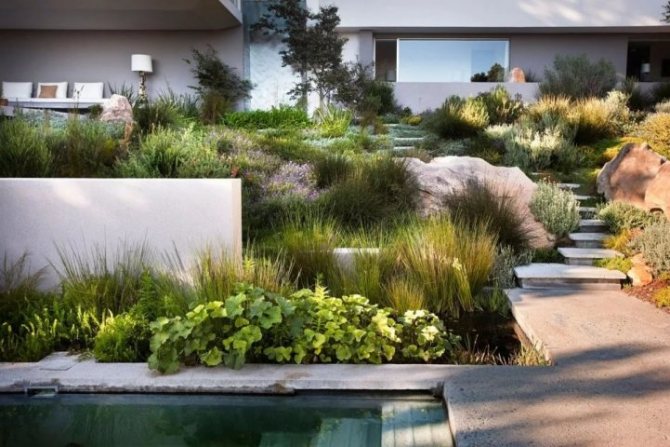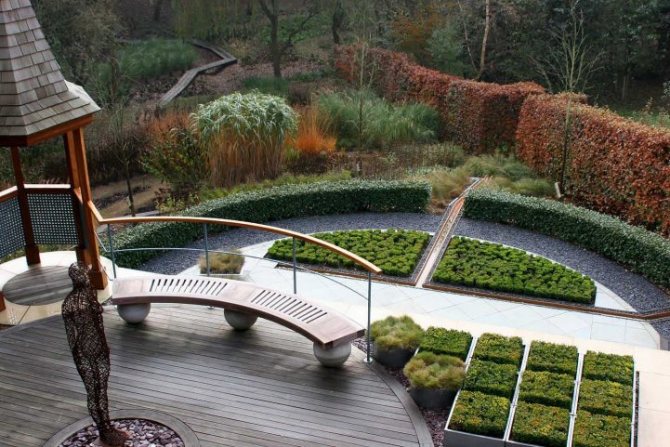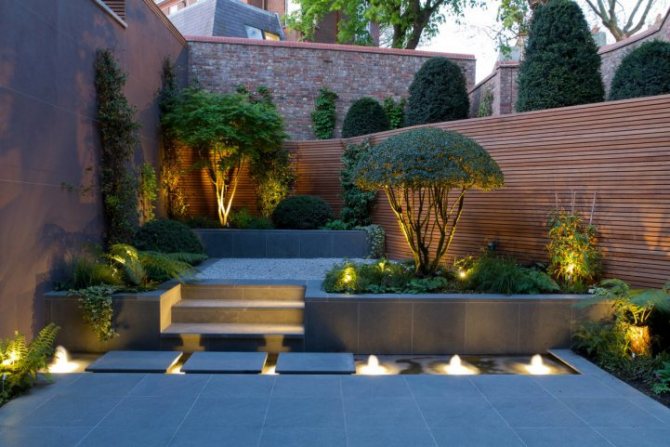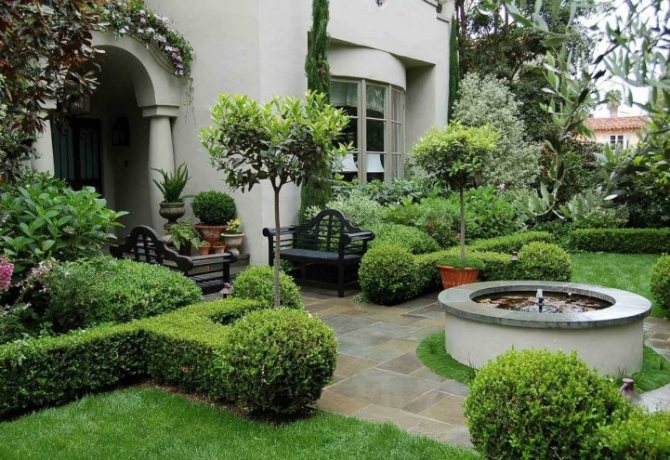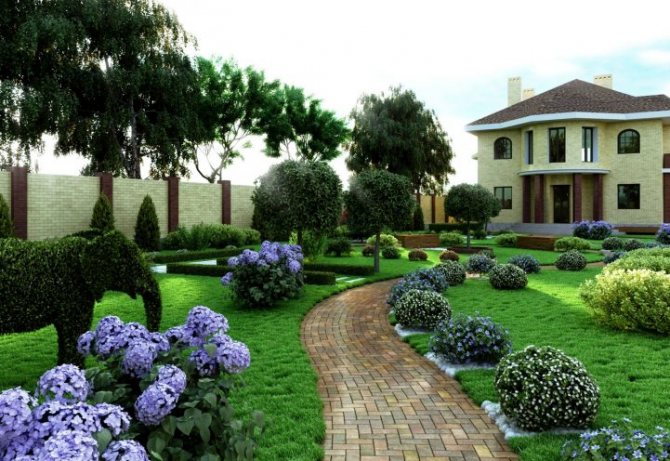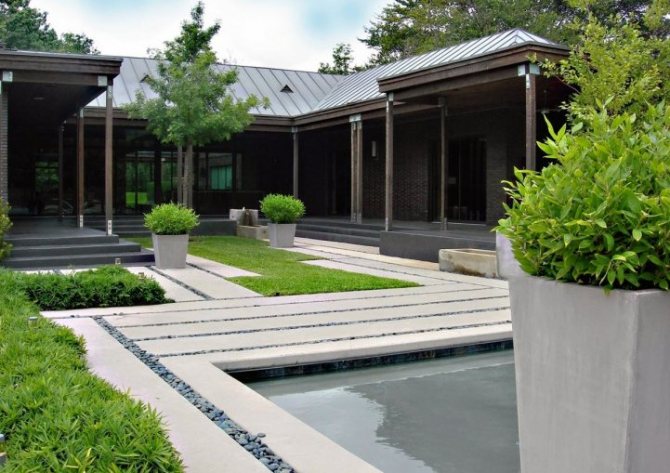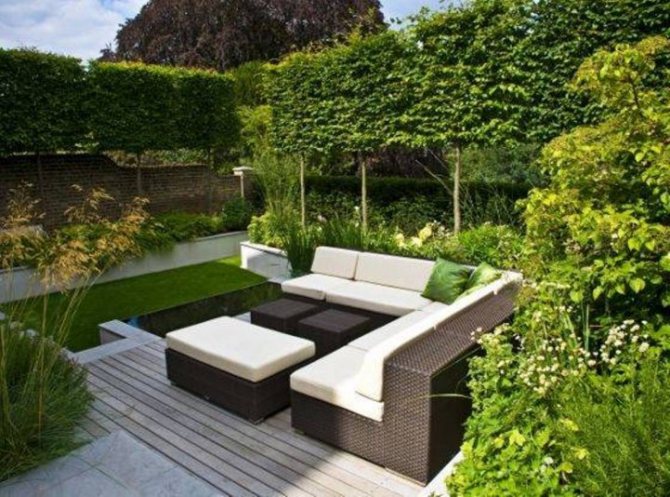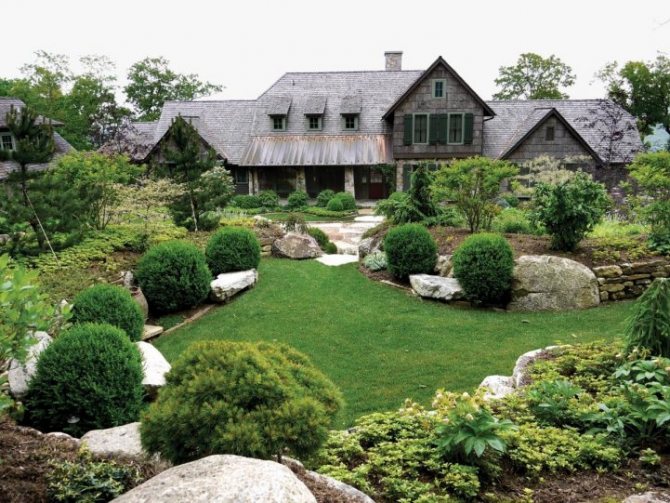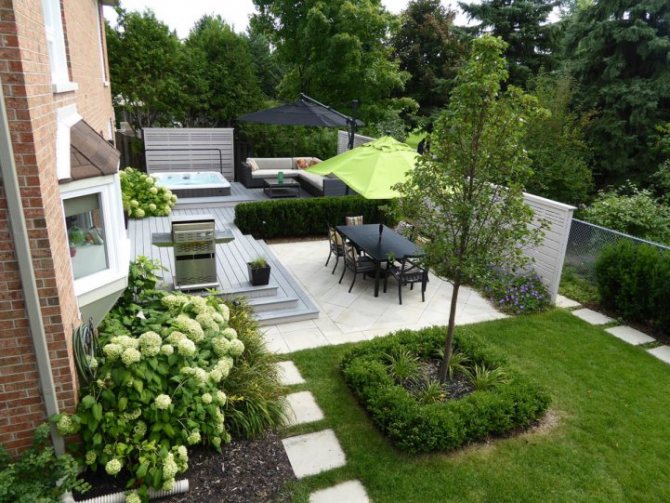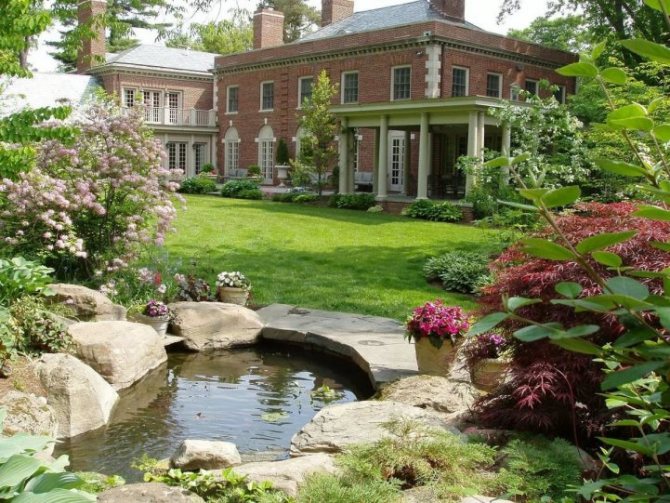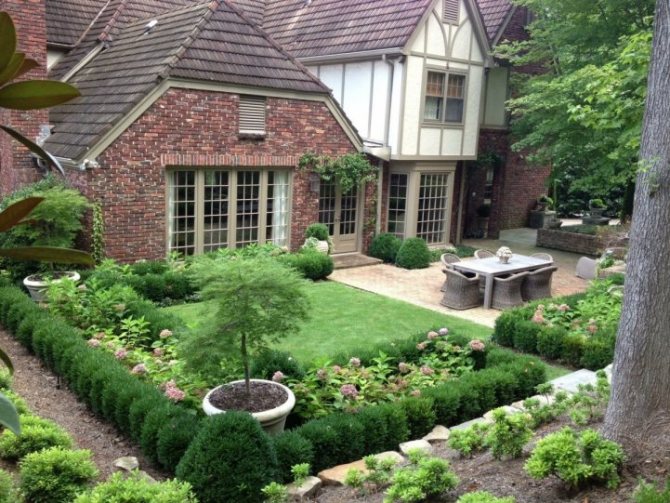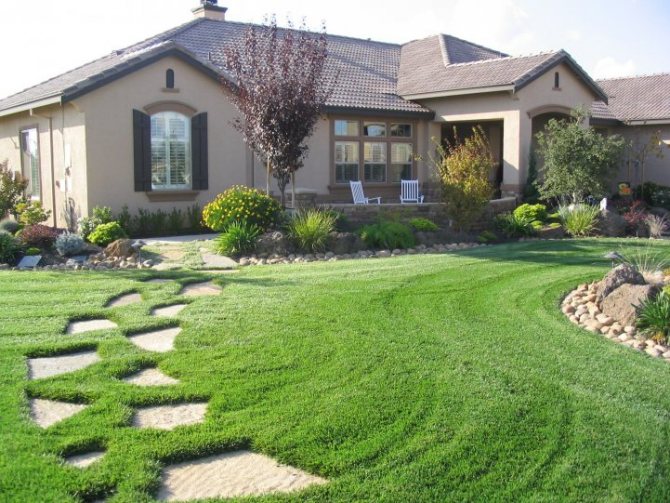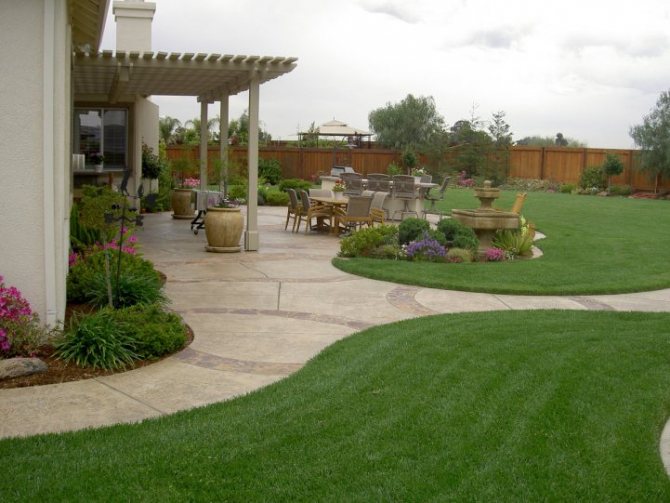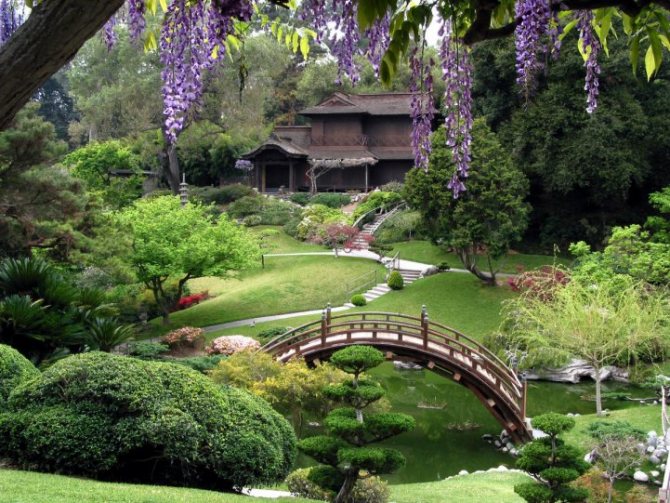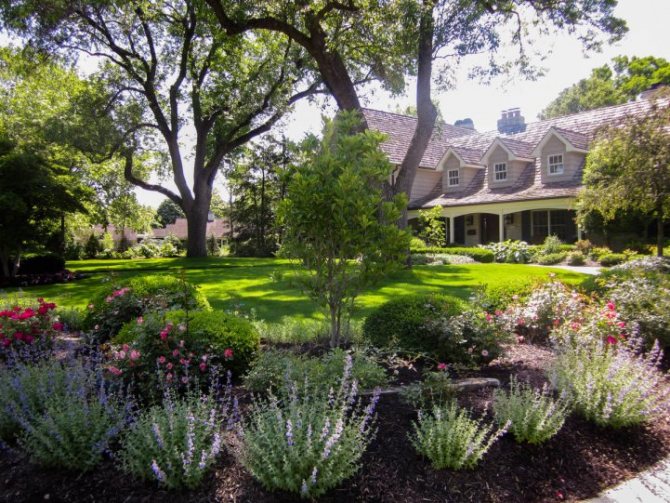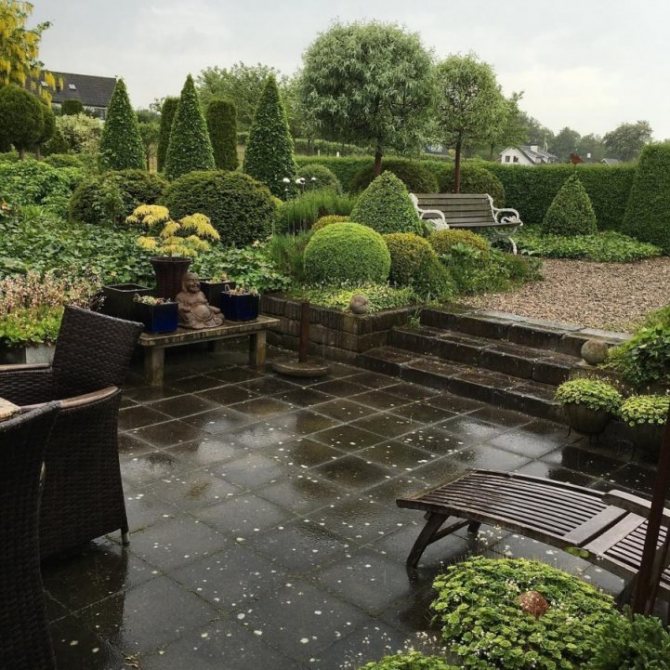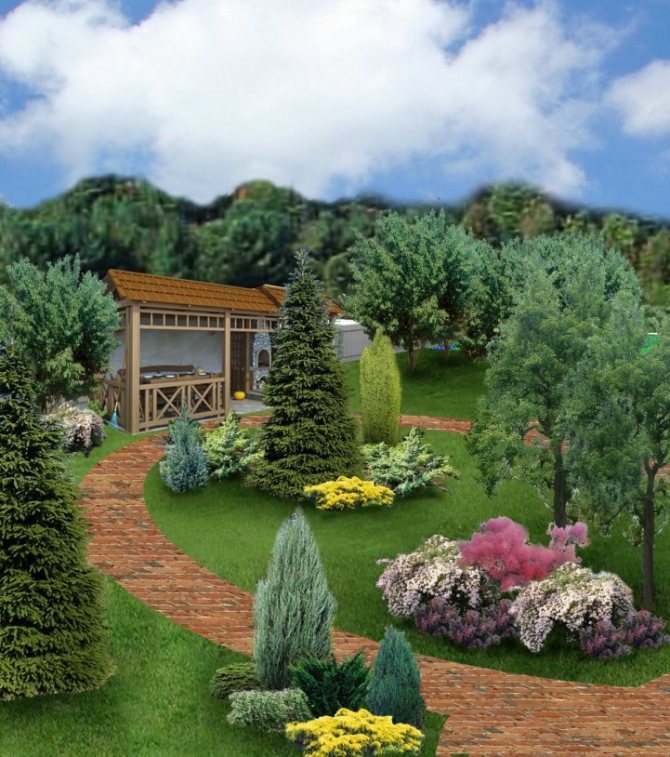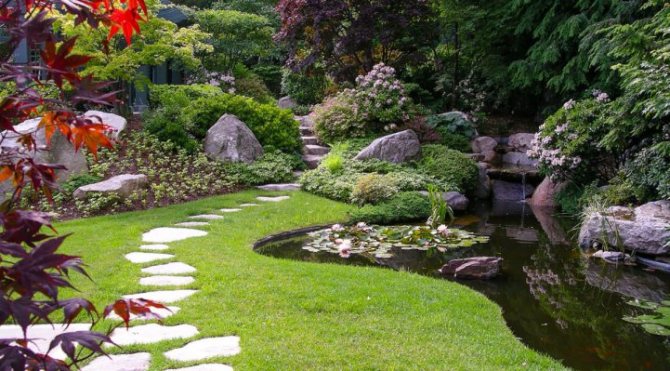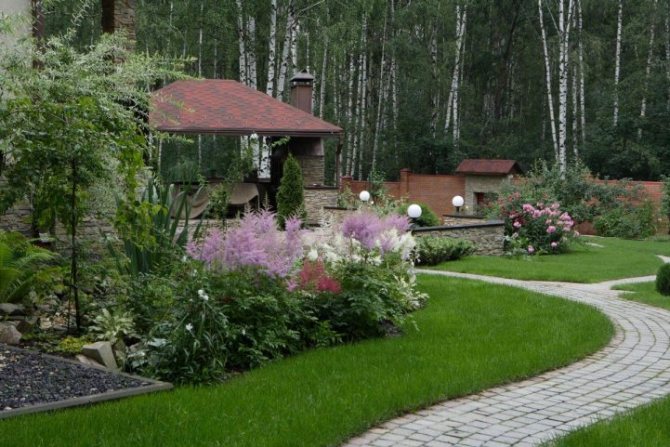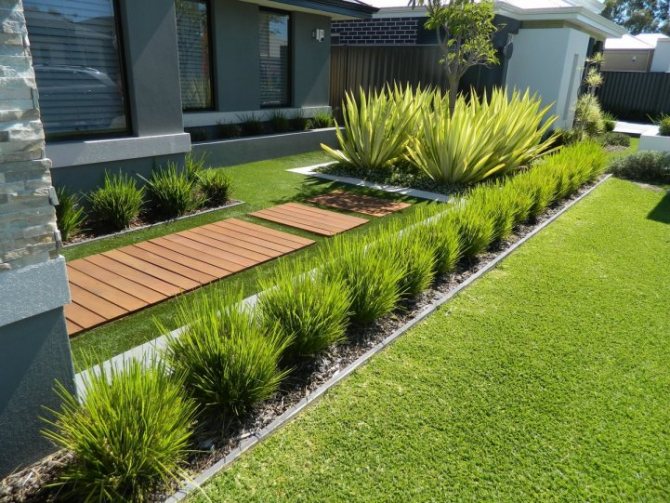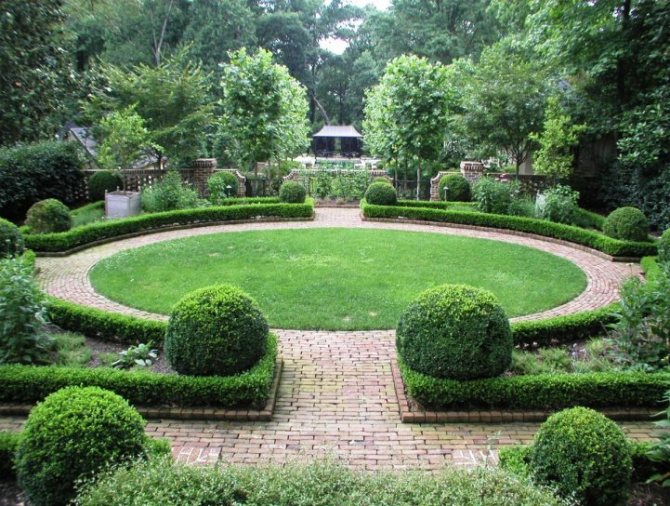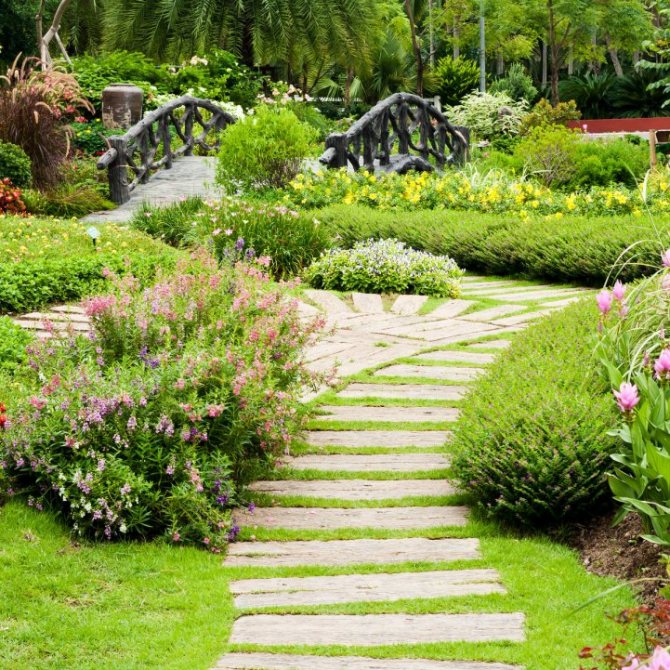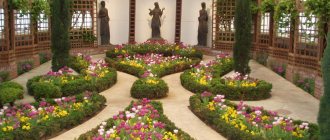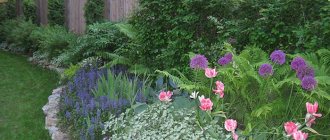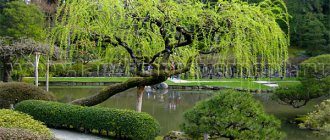Landscaping of the site project is not only landscaping the land area with herbs, flowers and fruit trees. This is the real art of filling a limited area with vegetation, artificial reservoirs, stones, small architectural elements. It organically combines such spheres of activity as garden design, plant growing, construction, architecture with the direct influence of cultural heritage and even a philosophical outlook.
Original garden landscaping
The owner of the site, before proceeding with his own front garden design, must decide how he would like to see his garden. It is enough to have a general idea to break it down into parts and to highlight specific elements of landscape design for each zone. Having figured out these issues, you can start creating a cozy and beautiful atmosphere that will combine the rectangular forms of urbanization and elements of the landscape landscape into a single ensemble.
History
The regular garden style has a long history. It originated in France in the 17th century and was used in gardening art to create parks and gardens at palaces and castles. Such a garden requires large and flat areas, and creating it is very costly both in terms of money and in terms of investing human labor and time in its structure.

Regular French park
Alpine slide
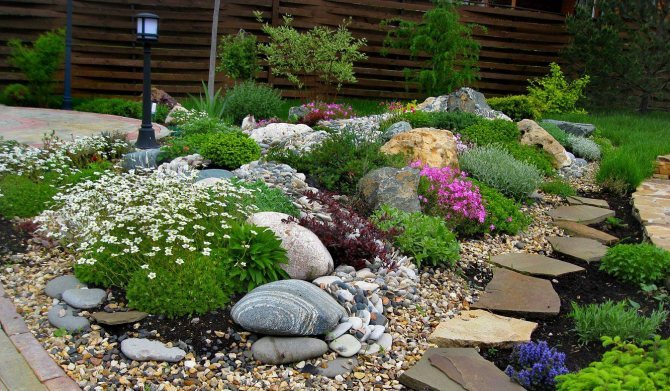

The construction of flower gardens, in particular alpine slides, is one of the most frequent and favorite types of flower decoration. And it requires compliance with the following rules:
- imitation of a natural mountain landscape does not allow symmetry, clear patterns and spirals. Natural naturalness is needed.
- the use of stones of different shapes, sizes, textures and types. A combination of no more than 3 types in one composition is allowed, so as not to overload the landscape.
- the use of a purchased, good stone for the front part. Beautiful shape and shade are welcome. It is better not to use the remains of bricks and stones found in the garden. The rock garden will lose its decorative effect. The maximum amount of such material is suitable for preparing the base and provided that such stones will not be visible. A good stone is the key to a beautiful alpine slide.
- competent location of the rock garden in the garden. Often they use a beautiful ceremonial place that you want to emphasize.
- when planting plants, those are used for which there will be enough space for full growth and development.
- the ratio of the size of the site to the structure. The alpine slide has an impressive size, a small area is not suitable for it.
- when placing the composition near the fence or walls of the house, it is also necessary to take into account the height of the structure and the rock garden.
Knowing and observing all of the above features, you can independently create an alpine slide on your site.
Recommendations
But even in small areas, it is quite possible to use individual elements of this style. For example, this form of landscaping is suitable for decorating the front entrance to a beautiful mansion. Note that it must be combined with the style of the building itself, and, for example, is completely unacceptable for a wooden log house, no matter how large it may be.


Mansion with a fountain
All elements of such a garden are made in the form of geometric shapes and have clear and regular contours. Alleys must be present.
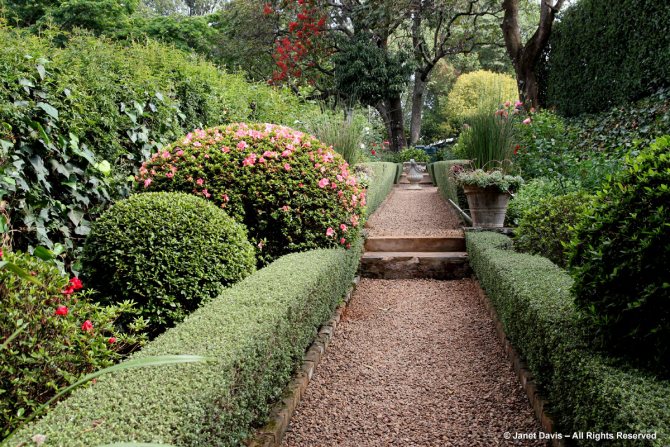

Alley
If there is a gazebo in the garden, then it is advisable to use forged metal or wooden carved decorative elements in its design.
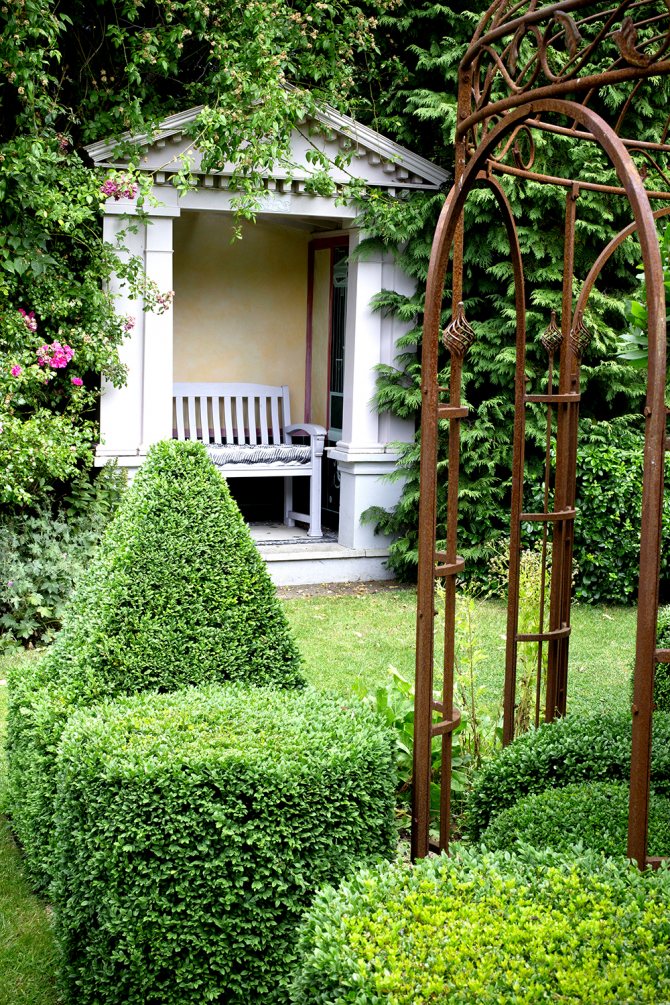

Alcove
The same fragments will be appropriate in the composition of the fences. Another option is a cast fence, made in a strict classical manner.


Cast metal fence
Photo styles of landscape design
Read here Recreation area in the country: beautiful ideas, application and arrangement in landscape design (125 photos and videos)
Did you like the article?
0
Garden parterre in regular style
A garden made in a regular style always has one obligatory element called "parterre". It represents a single ceremonial composition, consisting of flower beds, lawns and reservoirs. This is the face of the garden. A fountain or sculpture can also be placed here.
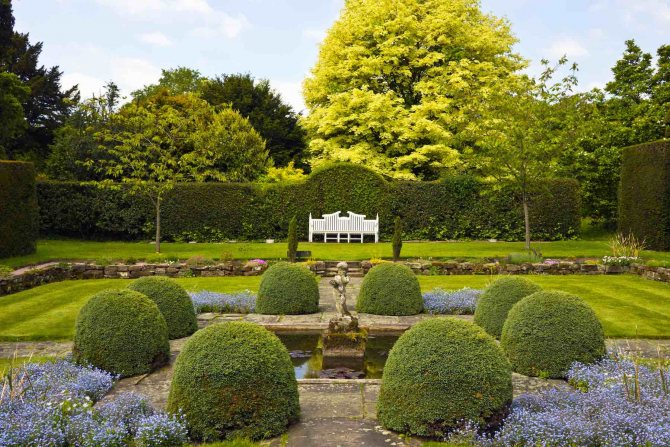

Parterre
The real front parterre occupies a large space, and the entire composition can be seen only from the windows of the upper floor of the house. But the simplest parterre today is often performed next to many private houses and cottages - it is a well-groomed lawn of the correct shape, bounded along the perimeter by a border or flower beds.
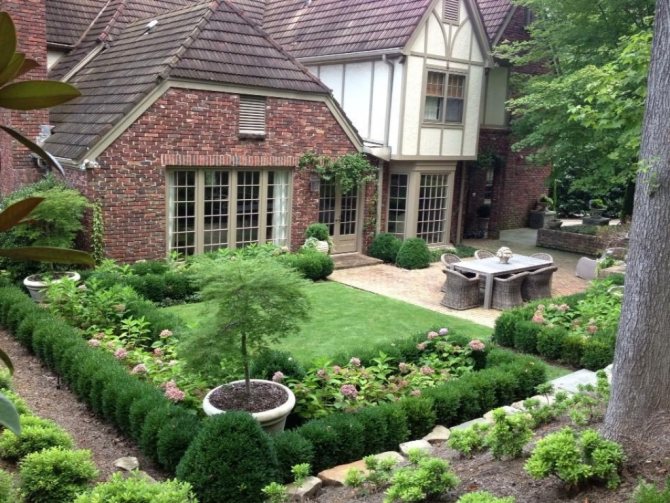

Small parterre in a private garden
Flower beds are one of the essential elements of parterre. They can be located separately or surround a sculptural group, a fountain or a large flowerpot, presenting a rather complex composition and intricate shape.
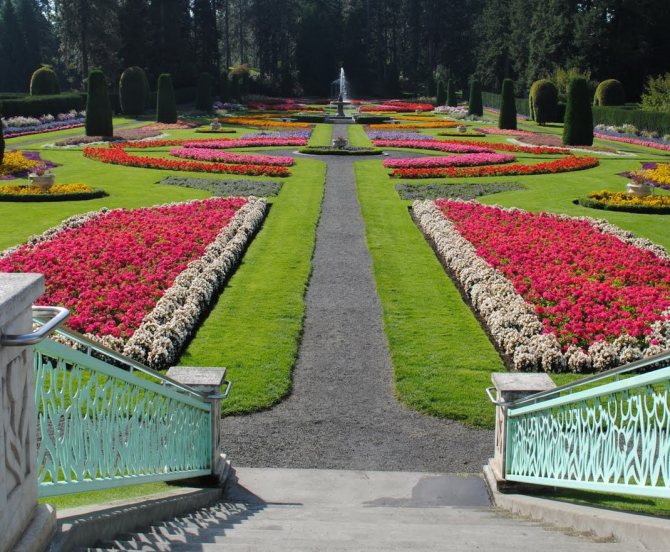

Flower beds in the parterre
Typical differences in landscape style
At first glance, the landscape style is simple and natural, but in fact you have to invest a lot of effort in order to create such a neat landscape design. A gentle transition from lawn to vibrant shrubs and trees. No geometric shapes, smooth lines and no patterns. But there are a number of specific details that they are trying to embody on land plots in order to recreate an amazing design in a landscape style:
- Rough terrain. There can be plains, hills, ravines, natural reservoirs, slopes - and all this alternates with smooth transitions.
- Lack of symmetry. No straight lines, geometric shapes, complete freedom in planning.
- Architectural structures on the site. Various gazebos, bridges and the like can be present and neatly flow into the whole landscape.
- Winding paths created from wild stone or tree cuts, lawn and the like. They play not only the role of decoration, but also serve to connect individual garden objects.
- Path system. It is necessary in order to be able to admire the garden from its different points and at the same time see various picturesque landscapes.
- Lack of a point from which a view of the whole garden could be opened.
- Garden compositions from completely different shrubs and trees. They should not be repeated among themselves. You can use forest, garden and field perennial flowers and plants.
- Natural or artificial bodies of water with an uneven coastline.
After urban high-rise buildings, flat roads, strict and monotonous courtyards, the landscape style of landscaping is the most relevant and popular for decorating your own courtyards. And although it is suitable for large territories, even a summer cottage with an area of only 4-6 acres can be equipped in this style.
Hedges
A garden decorated in a regular style is indispensable for hedges. They should always be neatly trimmed, as they are made in the form of clear geometric patterns.
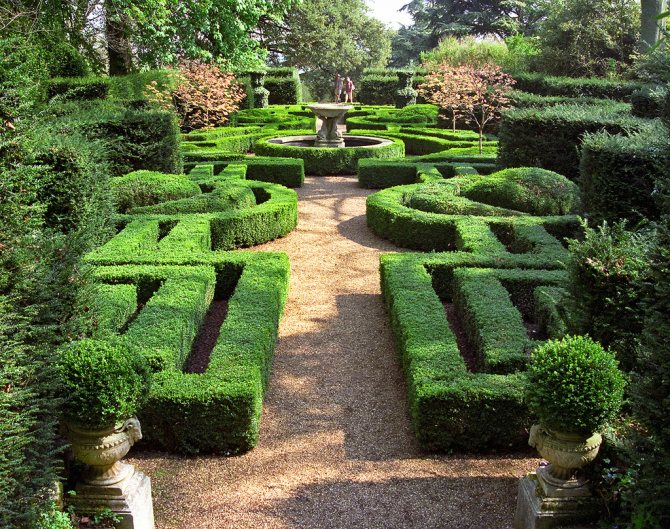

Shorn bushes (Ascot House, England)
A haircut can create arches and turrets, and even "offices" that are closed from prying eyes. These green walls make real labyrinths.
Advantages of a landscape garden
- First of all, it is worth noting the picturesque and impressive views. The landscaped gardens look very beautiful. It seems as if nature itself creates them, as if this is a wild park, to which the hand of a person has not been applied.
- The landscape-style plot is practical. For it, you can use those flowers that grow wonderfully in specific latitudes. There is no need to look for exotic plants, it is enough to grow the most popular shrubs and trees for each specific area. A big plus is that such plantings take root well and do not require much maintenance. In landscape style, plants are usually planted in a specific order: tall tree, shrub, flowers and lawn.
- This style is suitable for decorating a walking area or areas for recreation and sports games.
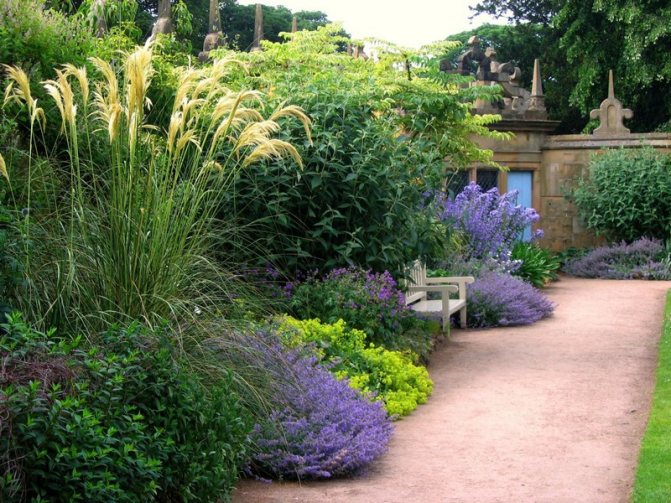

Garden in landscape style photo
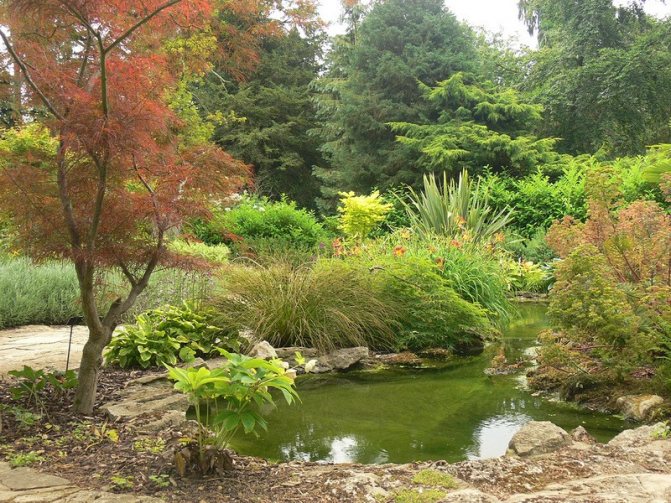

Garden in landscape style photo
What plants are used in a regular style
In such a garden, as a rule, plants that have decorative foliage are used. Another criterion is extremely long flowering time.
Trees that can be cut into interesting shapes include privet, boxwood, barberry, yew, thuja and juniper. However, you should not get carried away with a wide variety of landings - it is enough to use from two to three types in compositions.


Shorn boxwood
When creating flower beds for these gardens, the severity of the form is important. And this garden is also characterized by arabesques - flower beds, consisting of undersized plants. These can be bright styloid phlox, lobelia, coleus or ageratums.
If you need plants that bloom in spring, then the usual bulbous for this time are used. In summer, they will be replaced by brightly flowering annuals. For lawns, as a rule, choose a couple of types of low-growing grasses with narrow and small leaves.
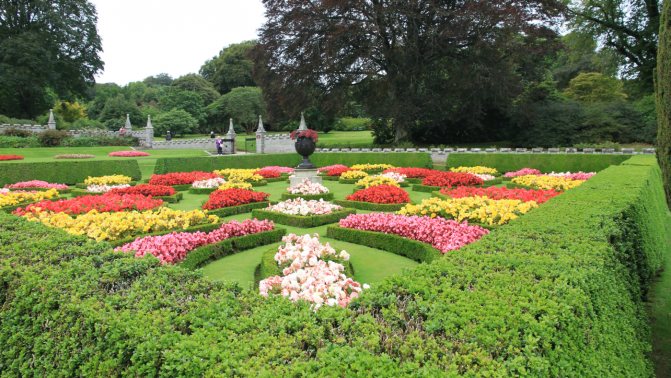

Flower beds in the parterre
Japanese style
A Japanese-style garden is a combination of peace and tranquility. When creating such a style, special attention to detail is necessary - each of them carries its own meaning.


Individual shapes of the site may have an irregular shape, but each of them must be different from all the others. Smooth transitions between them ensure the naturalness and compatibility of individual parts.
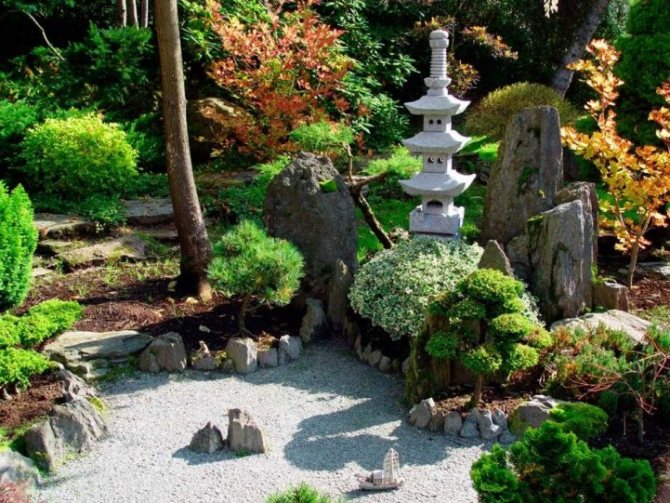

The main focus is on rocks, water and plants.
The presence of water is obligatory here - ponds, streams, fountains, bowls of water, dry streams. All this is decorated with bridges, snags, benches, garden screens.


The colors of the design are restrained, most often they are gray or white, green or brown shades.
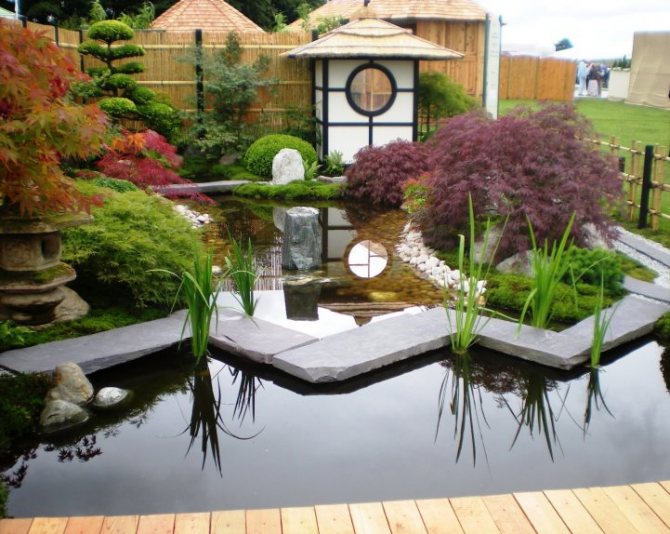

Thuja, juniper, ornamental fruit plants, ferns, peonies, irises are planted from plants.
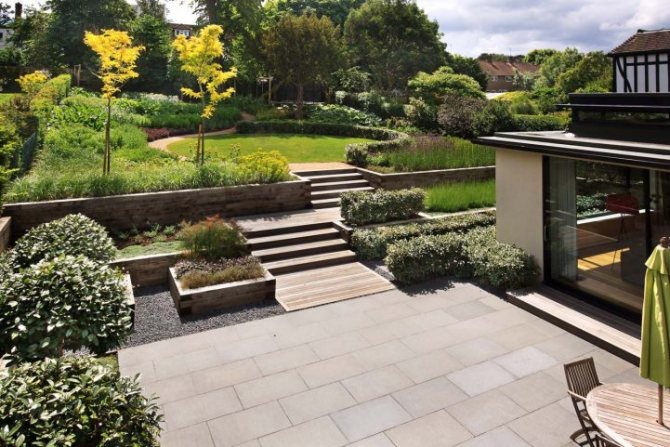

You can embody the Japanese style in any area.


These were the most commonly used landscaping styles. In addition to them, garden plots are often created in the style of high-tech, modern, minimalism. Provence, Mediterranean, colonial, forest styles look great.
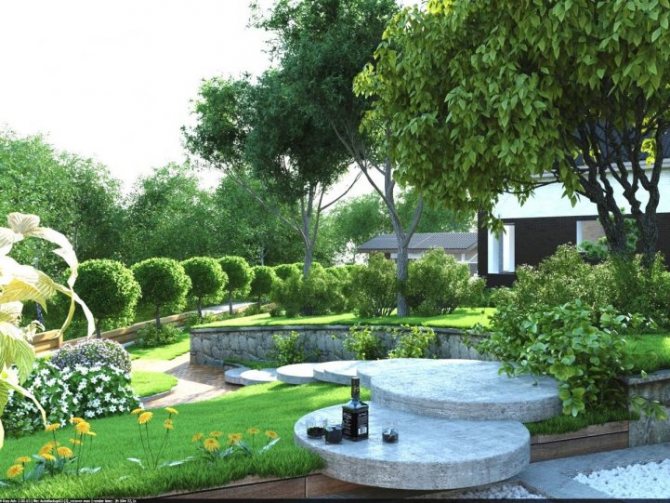

Simple and uncomplicated village landscape
Country style can be safely attributed to the most common in landscape design. This is due to the fact that the rustic style is considered simple and uncomplicated, so it is quite easy to implement it even on your own.


In a country-style garden, there are no clear and strict forms; complete freedom of creativity reigns here. Country style can be implemented in any size area.
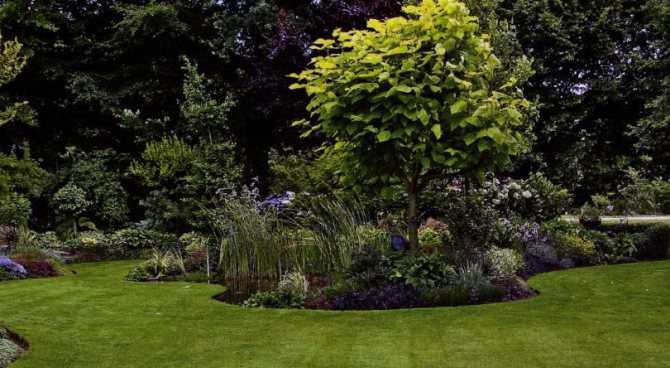

Please note that for this style, the presence of natural materials in the decor is mandatory, namely: wood, stone, gravel, metal, etc.
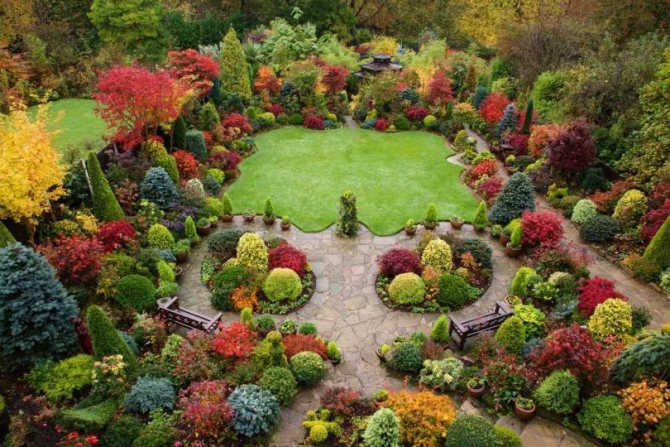

For landscaping, mainly fruit trees are chosen. This is an apple, cherry or plum. You can also plant shrubs. For example, this is hawthorn, viburnum or lilac. Gardening designers recommend choosing plants for such a garden that require a minimum of maintenance.
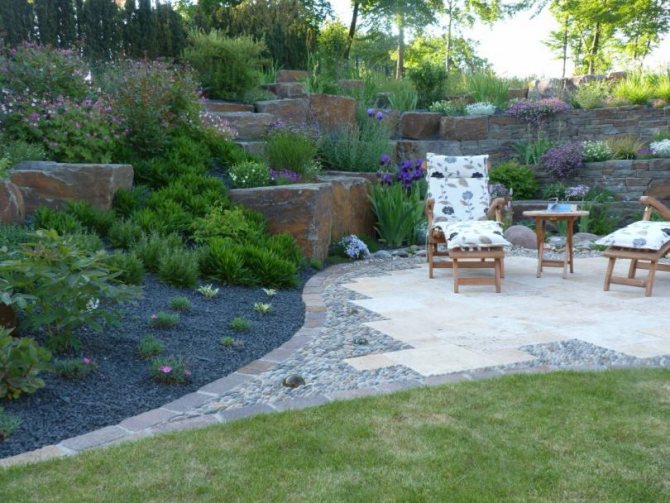

How to equip a summer cottage - design options, beautiful ideas and stylish design solutions (90 photos + video)- How to make a well with your own hands - ideas for arrangement and recommendations on how to beautifully arrange a well (110 photos + video)


Do-it-yourself compost pit: assignment on the site, requirements for the arrangement, principles of the device, manufacturing options. Recommendations for the operation of the compost pit


French gardens and parks
A group covering styles such as:
- French formal, based on the observance of symmetry and strict geometric forms (a classic example is the park of the Palace of Versailles);
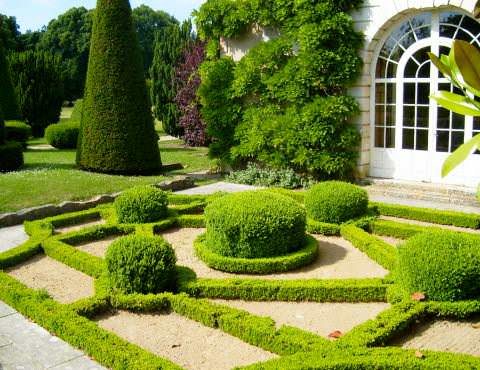

- French landscape, influenced by the English landscape style (Ermenonville Park);
- French Renaissance - the predecessor of the French formal style, which arose on the basis of the principles of the Italian Renaissance (Château Ambleville with parks in the spirit of the Italian Renaissance).

